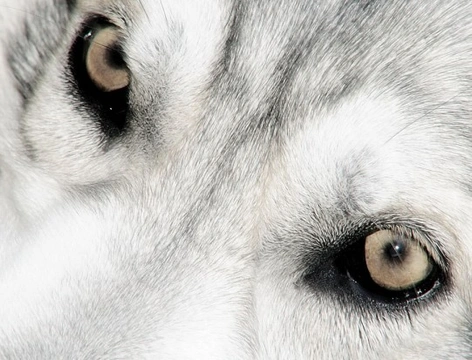
Northern Inuit Dog: The Perfect Wolf-Like Family Companion
Wolves are undeniably stunning, powerful, and impressive creatures, and many dog lovers have dreamed of owning a pet that captures the wild beauty of wolves. However, true wolves or wolf-dog hybrids are not suitable or legal pets in the UK without specific licences, which are rarely granted to private owners. Thankfully, for those enchanted by the wolf's majestic appearance yet seeking a loyal and safe companion, the Northern Inuit dog offers the next best thing.
About the Northern Inuit dog
The Northern Inuit dog was purposefully bred in the late 1980s to resemble a wild wolf's striking appearance while maintaining the temperament and reliability of domestic dogs. This breed was created by crossing the Siberian husky, Alaskan malamute, and German shepherd, with some debate over possible influences from other northern breeds like the Canadian Eskimo dog. The result is a large, double-coated, muscular canine that looks remarkably wolf-like but is wholly domestic and suitable for family life.
Wolf-like traits and appearance
The Northern Inuit dog features a dense double coat, typically found in white, grey, silver, black, apricot, or variations thereof with face masks. Unlike huskies and malamutes, their tail is straight rather than curled over their backs. Their athletic and sturdy build, alert stance, and noble appearance made them perfect choices to portray the direwolves in the famous TV series Game of Thrones. Their resemblance to wolves is unmistakable, attracting enthusiasts who want a canine companion with wild looks but without wild behaviours.
Temperament and family suitability
Though wolf-like in appearance, Northern Inuit dogs are known for their friendly, affectionate, and non-aggressive nature. They form strong bonds with their families, including children, and usually get along well with other pets. However, due to their intelligent and independent streak, they require an owner who can provide firm, consistent leadership. They often consider themselves pack leaders, so clear guidance is essential to avoid behavioural challenges. These dogs are not typically protective guard dogs but are more inclined to greet visitors warmly.
Exercise needs and lifestyle
Being active and energetic, Northern Inuit dogs require plenty of daily exercise, such as long walks, jogging, hiking, or play sessions to keep them mentally stimulated and physically healthy. Without sufficient exercise and engagement, they may become bored and display destructive behaviour or separation anxiety. Prospective owners should be prepared to invest time in keeping this breed active and happy.
Recognition and responsible ownership
The Northern Inuit dog is not yet recognised as an official breed by the UK Kennel Club or major international clubs, though the Northern Inuit Society monitors and promotes breed standards. As a relatively new breed, it will take time before it gains wider official recognition. Potential owners should seek reputable breeders who follow ethical breeding practices and prioritise the health and wellbeing of their dogs. Adopting or rehoming options are limited but possible through breed-specific societies.
Where to find a Northern Inuit dog
Northern Inuit dogs are still quite rare and not commonly found in shelters. For those interested in finding Northern Inuit puppies, it is important to connect with reputable breeders, such as those listed by the Northern Inuit Society. The society also supports rehoming adult Northern Inuit dogs, promoting responsible ownership and breed welfare.
Conclusion
The Northern Inuit dog beautifully bridges the gap between the wild majesty of wolves and the dependable, loving nature of domestic dogs. As an active, intelligent, and affectionate companion, they are an excellent choice for attentive owners looking for a unique, wolf-like family pet. Remember that responsible ownership, ethical breeding, and meeting the breed’s exercise and training needs are key to enjoying a fulfilling partnership with a Northern Inuit dog.



